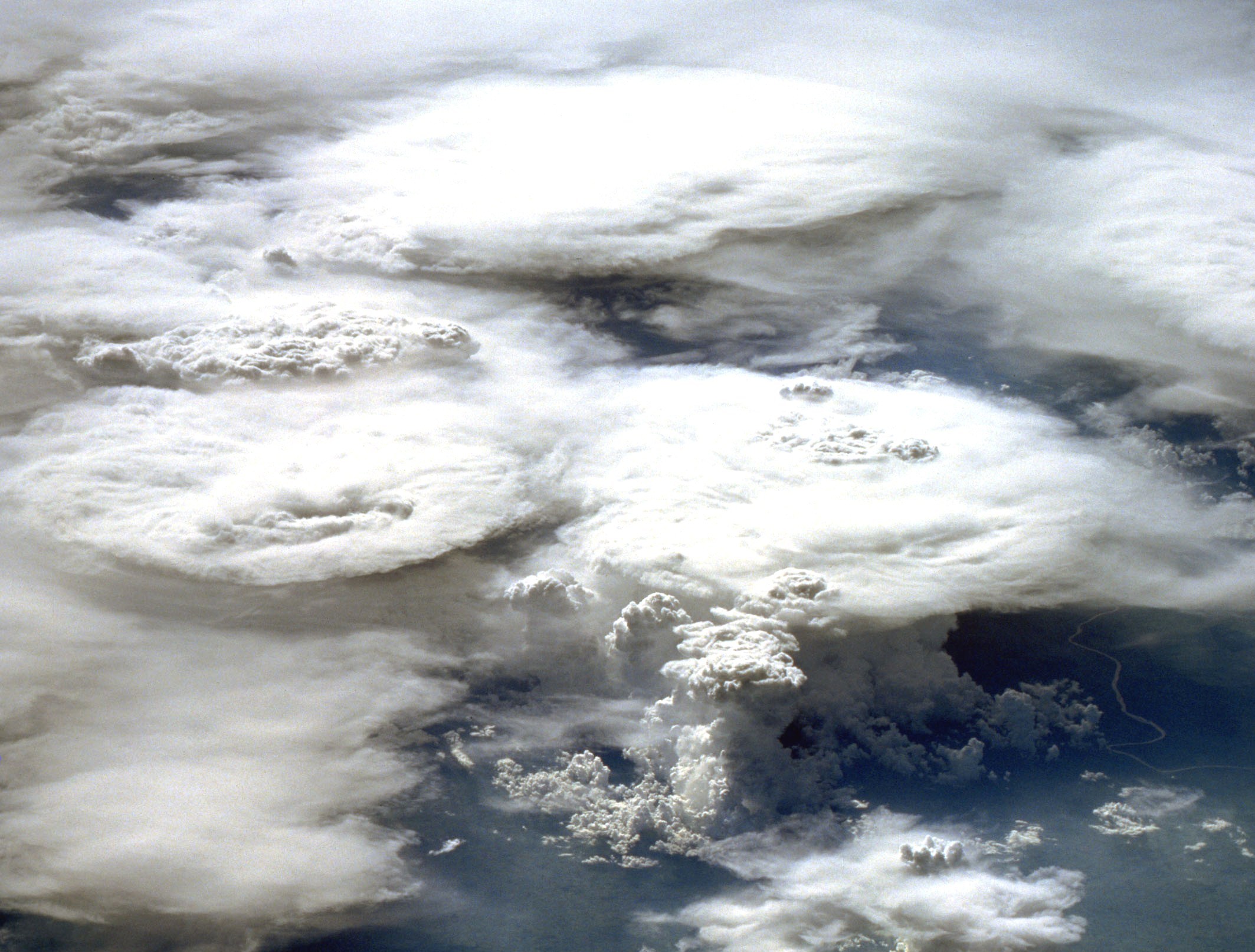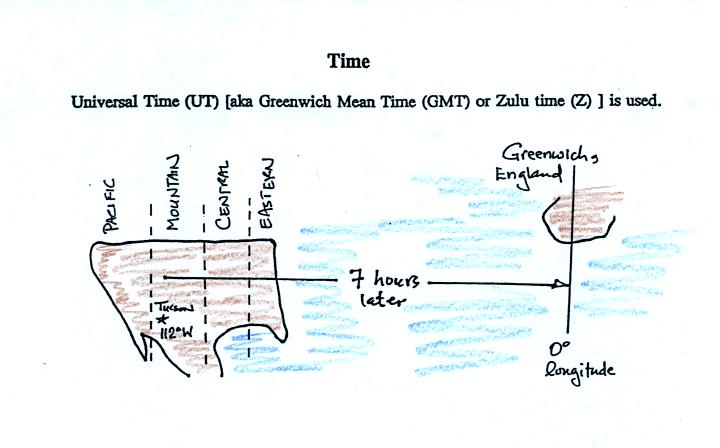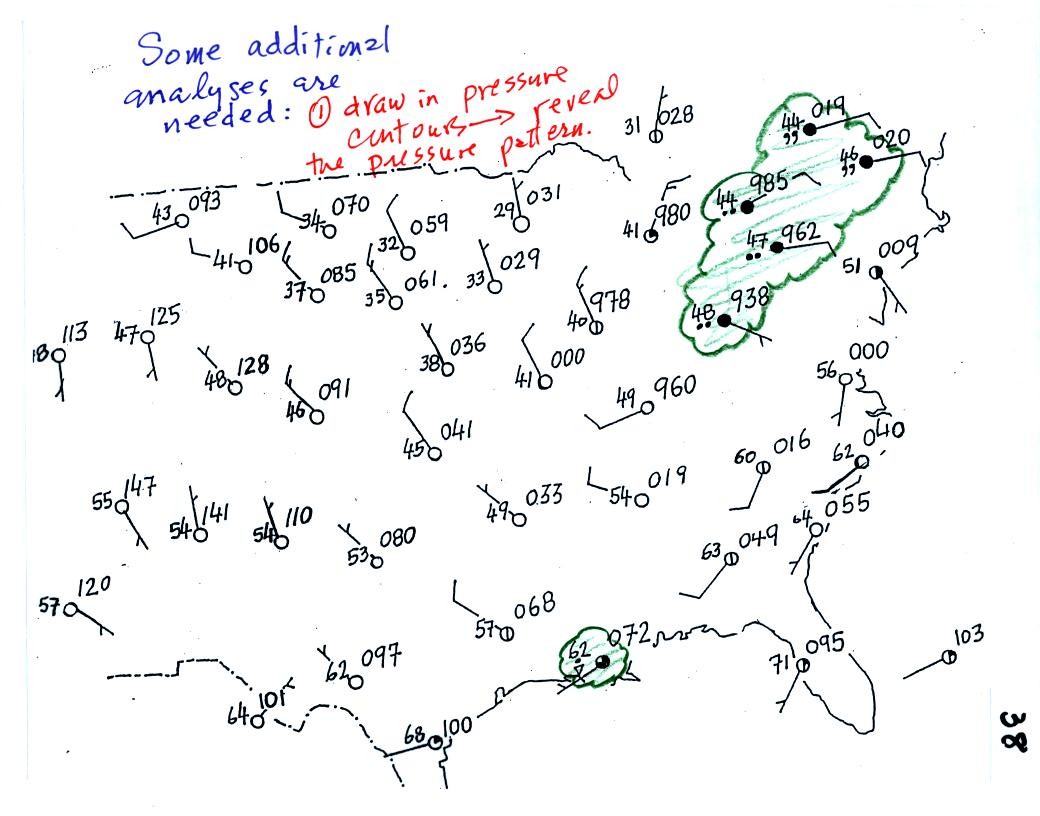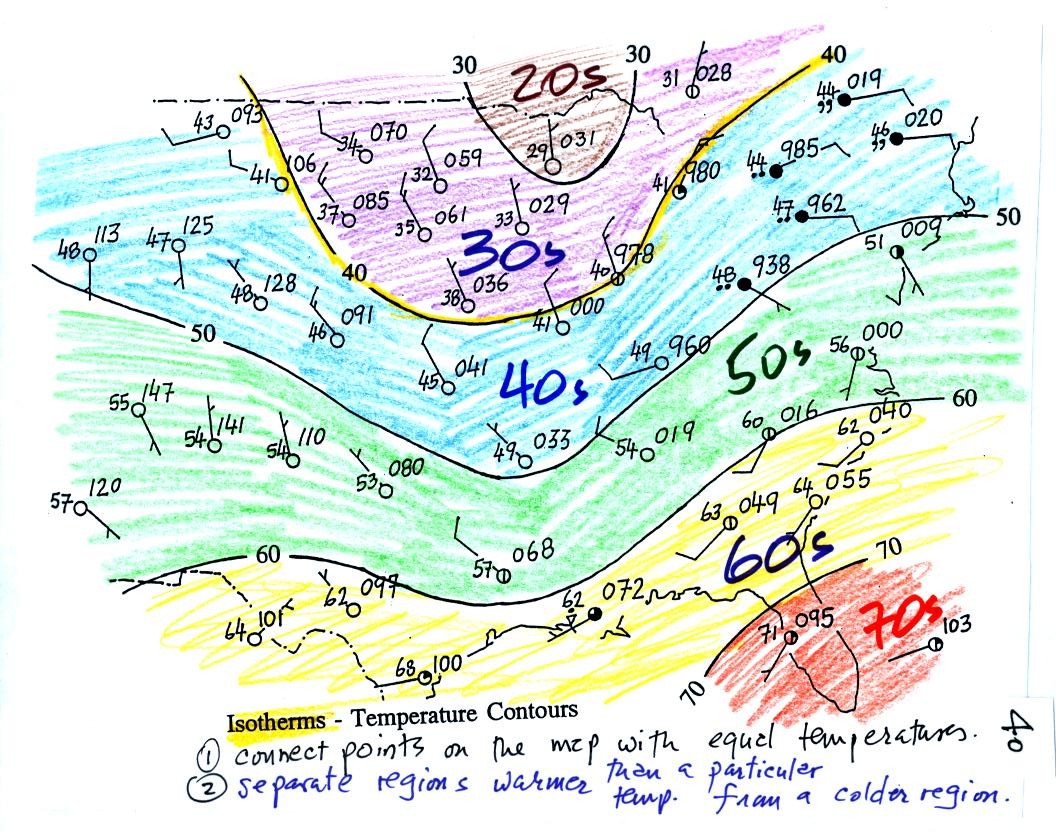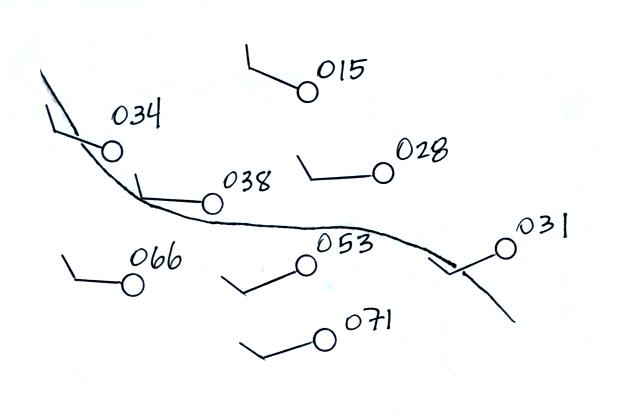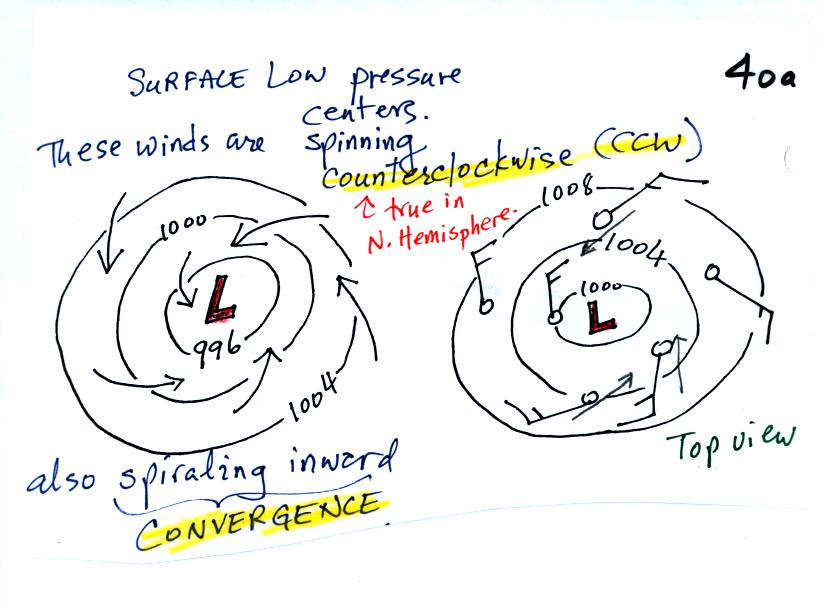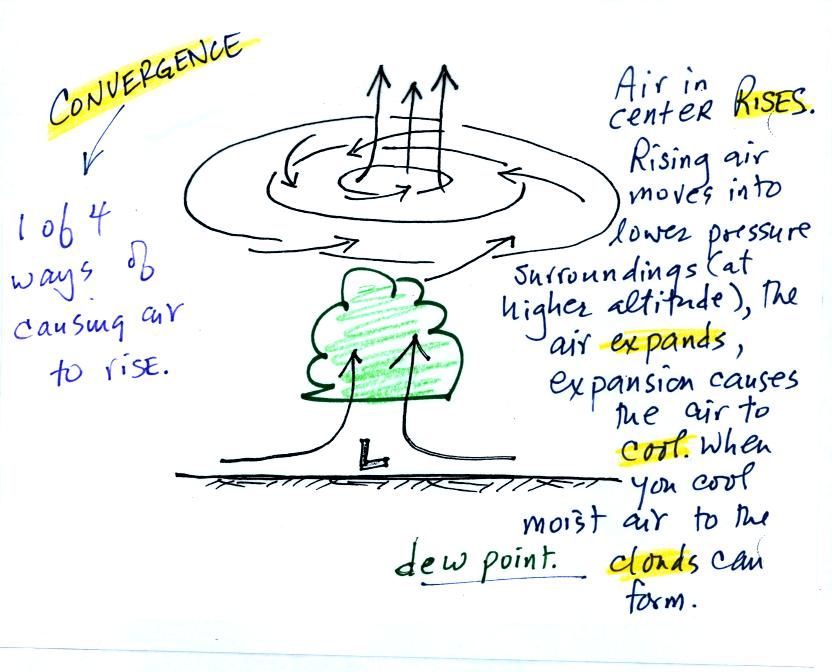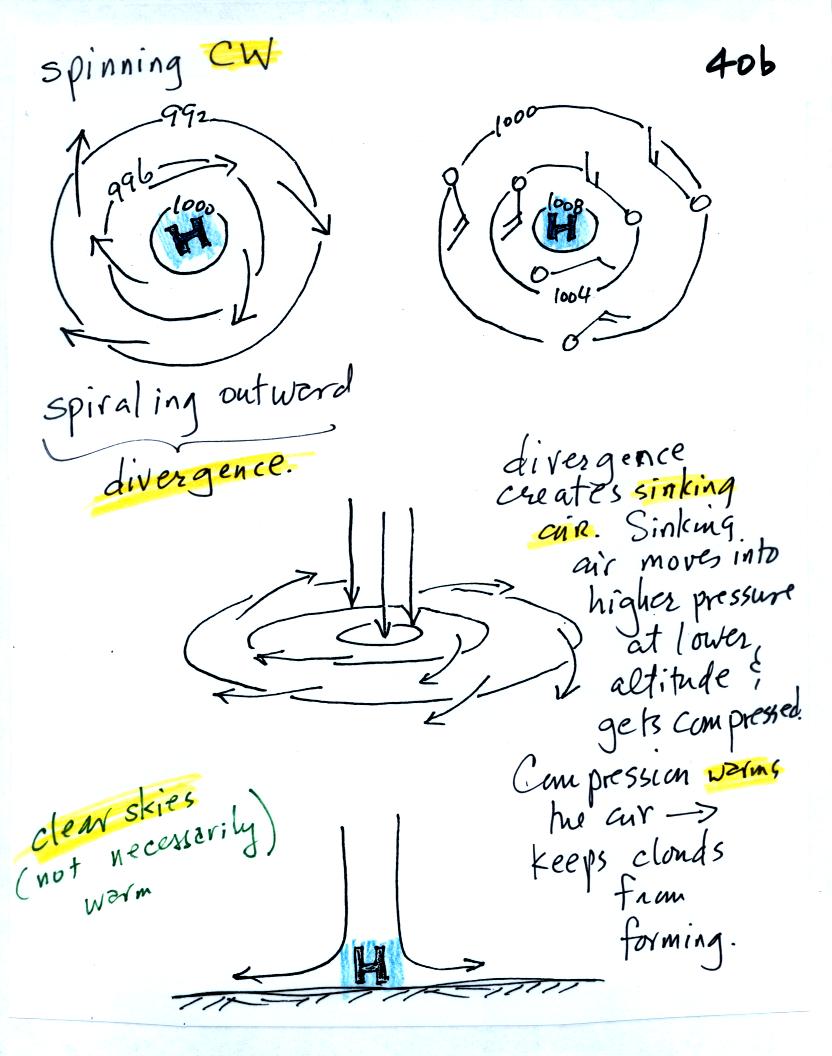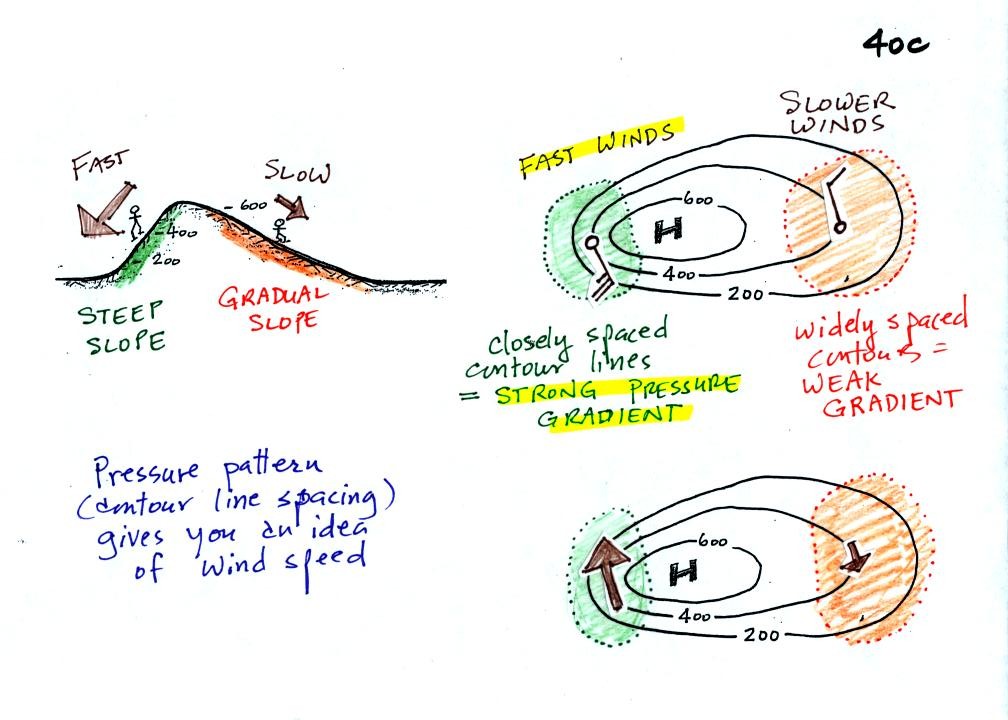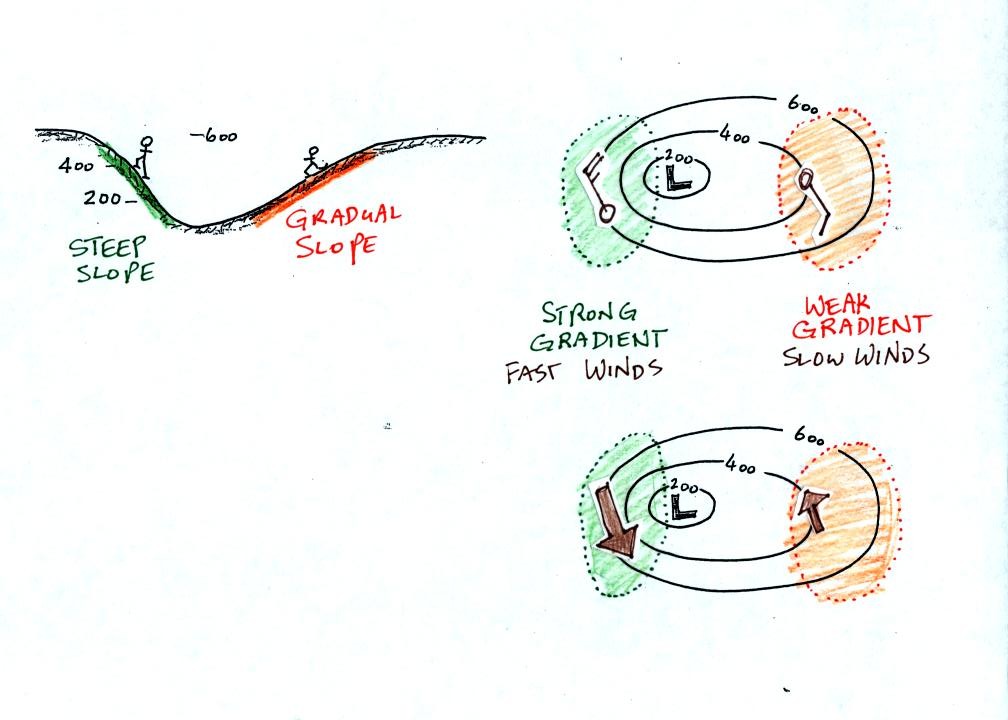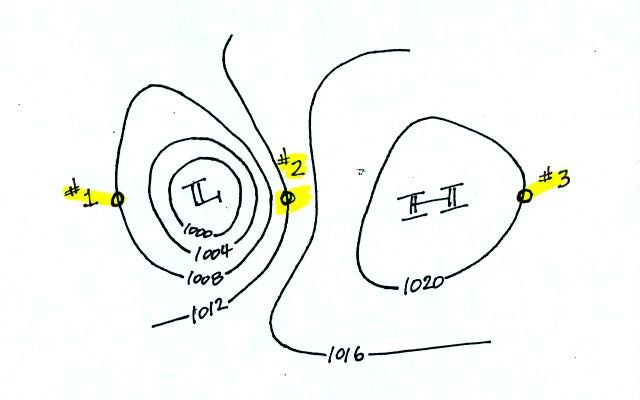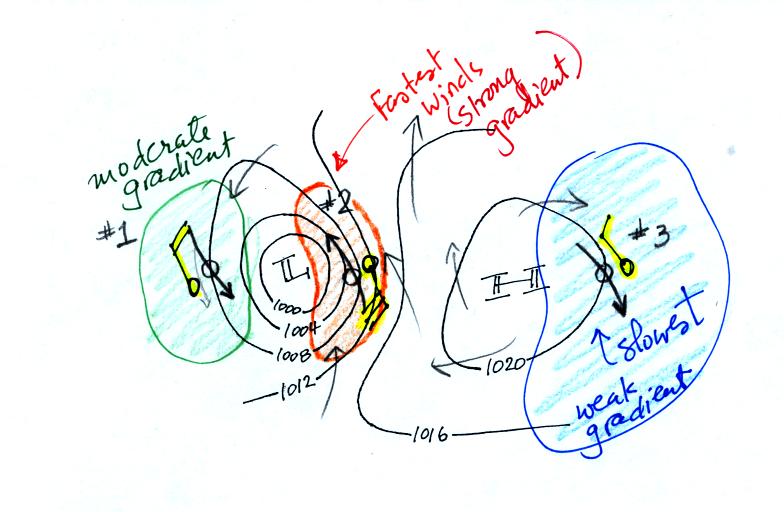Wednesday Feb. 9, 2011
click here to
download today's notes in a more printer friendly format
Some old Beatles songs ("I Don't Want to
Spoil the Party", "I'll
Follow the Sun", "Mr. Moonlight", "No Reply", "What You're Doing"
and
part
of
"Honey
Don't") to accompany the distribution of Experiment
#2 materials before class this
morning.
I'll bring the remaining materials again on Friday, so don't worry
if you weren't able to pick up your materials today.
The Quiz #1 Study Guide is now
online. Quiz #1 will cover material on both the Practice Quiz and Quiz #1 Study
Guides. A total of 3 reviews have been scheduled for early next
week (2-3 pm and 4-5 pm on Monday, 4-5 pm on Tuesday).
I've been neglecting the Picture of the Day. I found
this photograph (taken from the Space Shuttle) in last semester's notes
- it shows thunderstorms forming over Brazil. The flat cloud tops
are about 15 km high and mark the top of the troposphere/bottom of the
stratosphere.
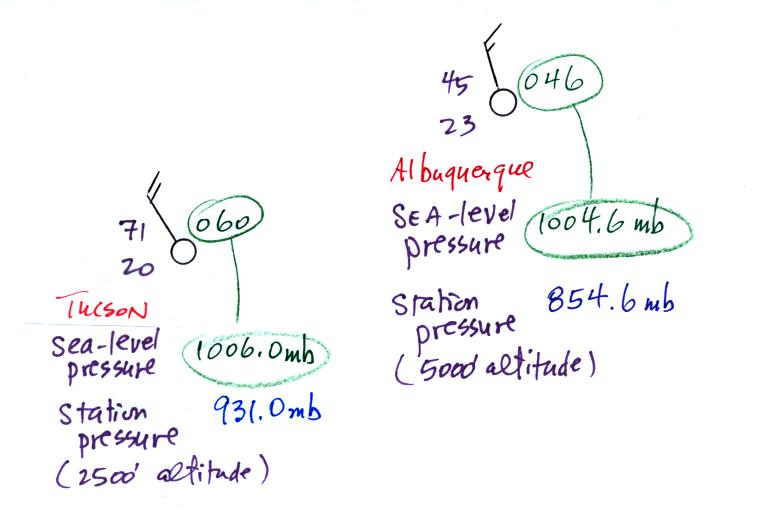
A station pressure of 931.0 mb was measured in Tucson on Tuesday
afternoon at 3 pm. At the same time a station pressure of 854.6
mb was measured in Albuquerque. A 75 mb altitude correction was
added to the Tucson value to obtain the 1006.0 mb sea level pressure
estimate (75 mb because Tucson is 750 meters above sea level and
pressure drops about 1 mb for every 10 of altitude).
The leading 10 and the decimal point were removed from 1006.0 and the
remaining three figures 060 were plotted on the surface map.
A
larger, 150 mb, altitude correction was added to the Albuquerque
station pressure (854.6 mb + 150 mb = 1004.6 mb) because Albuquerque is
found at higher altitude (1500 meters above sea level). The 10
and the decimal point were removed from 1004.6 and 046 was plotted on
the map.
Another
important piece of information on a surface map is the time the
observations were collected. Time on a
surface map is converted to a universally agreed upon time zone called
Universal Time (or Greenwich Mean Time, or Zulu time).
That is the time at 0 degrees longitude, the Prime Meridian.
There is a 7 hour time
zone difference between Tucson (Tucson stays on Mountain
Standard Time year round) and Universal Time. You must add 7
hours to the time in Tucson to obtain Universal Time.
Here are several examples of conversions between MST and UT (not done in class)
to convert from MST (Mountain Standard Time) to UT (Universal Time)
10:20 am MST:
add the 7
hour time zone correction ---> 10:20
+ 7:00 = 17:20 UT (5:20 pm in Greenwich)
2:30 pm MST:
first convert to the 24 hour clock
by adding 12 hours 2:30 pm MST + 12:00 = 14:30 MST
add the 7 hour time zone
correction ---> 14:30 + 7:00 = 21:30 UT (7:30 pm in England)
7:45 pm MST:
convert to the 24 hour clock by
adding 12 hours 7:45 pm MST + 12:00 = 19:45 MST
add the 7 hour time zone correction ---> 19:45 + 7:00 = 26:45 UT
since this is greater than 24:00 (past midnight) we'll subtract 24
hours 26:45 UT - 24:00 = 02:45 am the next day
to convert from UT to MST
18Z:
subtract the 7 hour time
zone
correction ---> 18:00 - 7:00 = 11:00 am MST
02Z:
if we subtract the 7 hour time
zone correction we will get a negative
number.
We will add 24:00 to 02:00 UT then subtract 7 hours
02:00
+
24:00 = 26:00
26:00 - 7:00 = 19:00 MST on the previous day
2 hours past midnight in Greenwich is 7 pm the previous day in
Tucson
A bunch of weather data has been
plotted (using the station model notation) on a surface weather map in
the figure
below (p. 38 in the ClassNotes).
Plotting the surface weather
data
on a map is
just the
beginning.
For example you really can't tell what is causing the cloudy weather
with rain (the dot symbols are rain) and drizzle (the comma symbols) in
the NE portion of the map above or the rain
shower along the Gulf Coast. Some additional
analysis is needed. A meteorologist would usually begin by
drawing some contour lines of pressure to map out the large scale
pressure pattern. We will look first at contour lines of
temperature, they are a little easier to understand (easier to decode
the plotted data and temperature varies across the country in a fairly
predictable way).
Isotherms, temperature
contour lines, are usually drawn at 10 F
intervals.
They do two things: (1) connect points on the map that all
have the same temperature, and (2) separate regions that are warmer
than a particular temperature from regions that are colder. The
40o F isotherm highlighted in yellow above passes through
a city which is reporting a temperature of exactly 40o.
Mostly
it
goes
between
pairs
of
cities:
one
with
a
temperature
warmer
than
40o and the other
colder
than 40o. Temperatures
generally decrease with
increasing
latitude: warmest temperatures are usually in the south, colder
temperatures in the north.
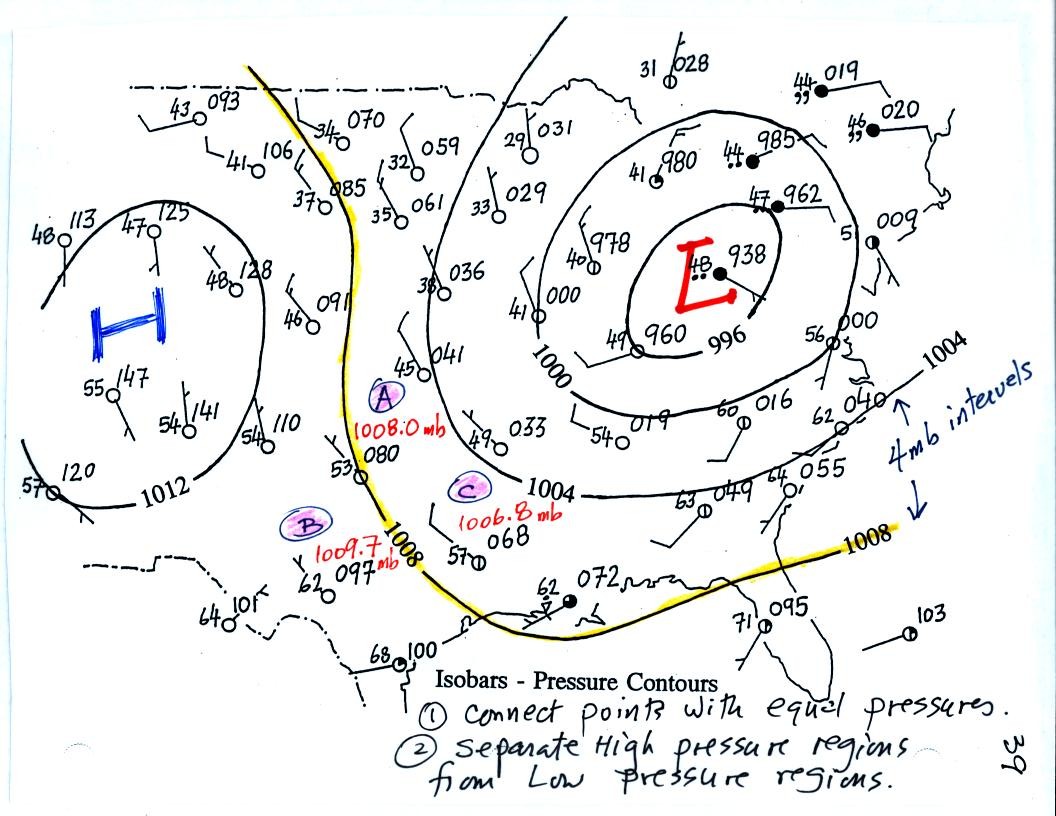
Now the same data with isobars
drawn in. Again they
separate
regions with pressure higher than a particular value from regions with
pressures lower than that value.
Isobars are generally drawn at 4 mb intervals. Isobars also connect points on the map
with the same pressure. The 1008 mb isobar (highlighted in
yellow) passes through a city at Point
A where the pressure is exactly
1008.0 mb. Most of the time the isobar
will pass between two
cities. The 1008 mb isobar passes between cities with
pressures
of 1009.7 mb at Point B and
1006.8 mb at Point C.
You would
expect to find 1008 mb somewhere in between
those two cites, that is where the 1008 mb isobar goes.
The pattern on this map is very different from the
pattern
of
isotherms. On this map the main features are the circular low and
high pressure centers.
Here's a little practice (this figure wasn't
shown in class). Is this the 1000, 1002, 1004,
1006, or 1008 mb isobar? (you'll find the answer at the end of today's
notes)
Just locating closed centers of high and low pressure will already
tell you a lot about the weather that is occurring in their vicinity.
1.
We'll start with the large nearly circular centers of High and Low
pressure. Low pressure is drawn below. These figures are
more neatly drawn versions of what we did in class.
Air will start moving
toward low
pressure (like a rock sitting on a hillside that starts to roll
downhill), then something called the Coriolis force will cause
the
wind to start to spin (we'll learn more about the Coriolis force later
in the semester). In the northern hemisphere winds spin in a
counterclockwise (CCW) direction
around surface
low pressure
centers. The winds also spiral inward toward the center of the
low, this is called convergence. [winds spin clockwise around low
pressure centers in the southern hemisphere but still spiral inward,
don't worry about the southern hemisphere until later in the semester]
When the converging air reaches the
center of the low it starts to rise.
Rising air expands (because it is moving into lower pressure
surroundings at higher altitude), the expansion causes it to
cool. If the air is moist
and it is cooled enough (to or below the dew point temperature) clouds
will form and may then begin to rain or snow. Convergence is 1 of 4 ways of causing air
to rise (we'll learn what the rest are soon, and, actually, you
already know what one of them is).
You
often
see
cloudy
skies and stormy weather associated with surface low pressure.
Everything is pretty much the exact opposite in the case of surface
high pressure.
Winds
spin
clockwise
(counterclockwise
in
the
southern
hemisphere)
and spiral outward.
The
outward motion is called divergence.
Air sinks in the center of
surface high pressure to
replace the diverging air. The sinking air is compressed and
warms. This keeps clouds from forming so clear
skies are normally found with high pressure (clear skies but not
necessarily warm weather, strong surface high pressure often forms when
the air is very cold).
2.
The
pressure pattern will also tell you something about where you might
expect to find fast or slow winds. In this case we look for
regions where
the isobars are either closely spaced together or widely spaced.
Closely spaced contours means
pressure is changing
rapidly
with
distance. This is known as a strong pressure gradient and
produces fast winds. It is analogous to a steep slope on a
hillside. If you trip walking on a hill, you will roll rapidly
down a steep
hillside, more slowly down a gradual slope.
The winds around a high pressure
center are shown above using both the
station model notation and arrows. The winds are spinning clockwise and
spiraling outward slightly. Note the different wind speeds (25
knots and 10 knots plotted using the station model notation)
Winds spin counterclockwise and
spiral inward around
low
pressure
centers. The fastest winds are again found where the pressure
gradient is strongest.
This figure is found at the bottom
of p. 40 c in the photocopied ClassNotes. You should be able to
sketch in the direction of the wind at each of the three
points and determine where the fastest and slowest winds would be
found. (you'll find the answer below because this is about as far as we
got in class on Wednesday).
Answer to the isobar question:
1004 mb isobar
Answer to the wind
directions and wind speeds question above
The winds are blowing from the NNW
at Points 1 and 3. The winds are blowing from the SSE at Point
2. The fastest winds (30 knots) are found at Point 2 because that
is where the isobars are closest together (strongest pressure
gradient). The slowest winds (10 knots) are at Point 3.
Notice also how the wind direction can affect the temperature
pattern. The winds at Point 2 are coming from the south and are
probably warmer than the winds coming from the north at Points 1 &
3. We'll be looking at this in more detail on Friday.
